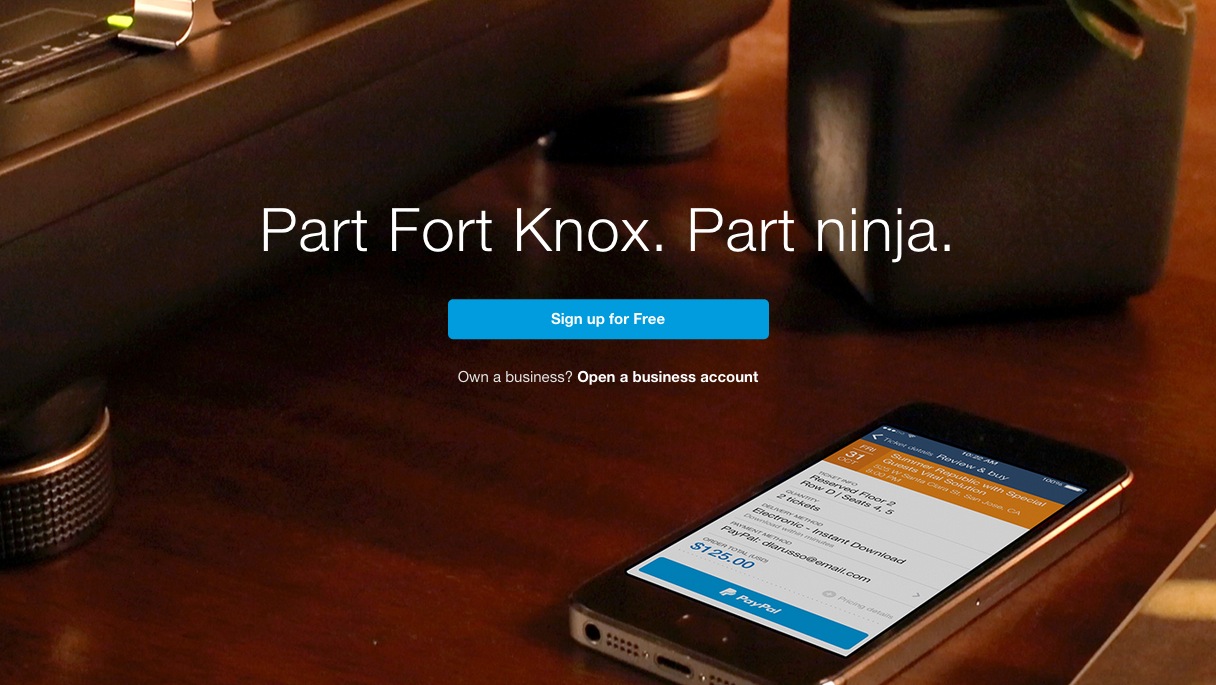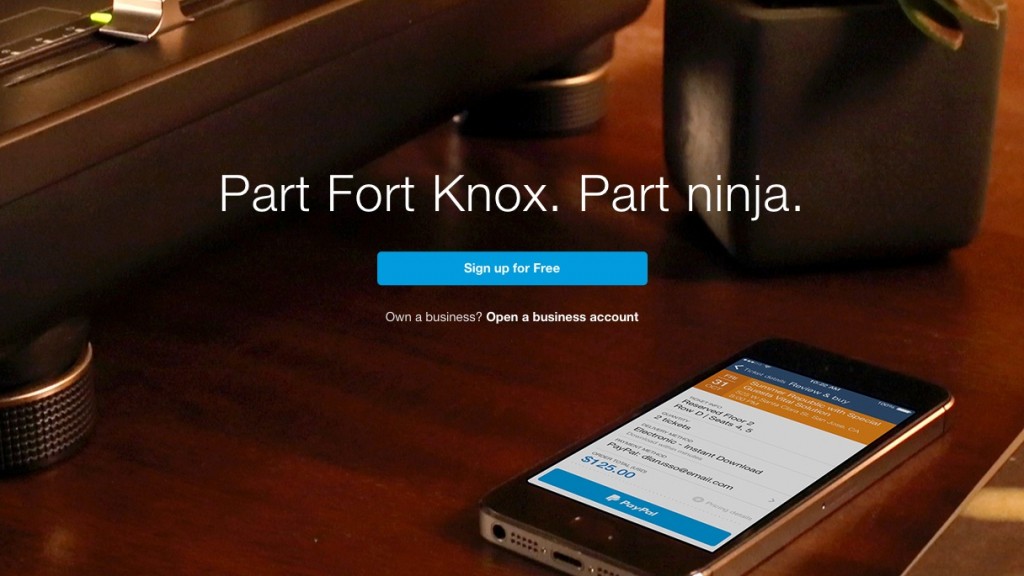Is your small business ready to take online payments?
If not — you can be soon, with PayPal.
Any small business can benefit from a quick, easy, secure way to bill customers or clients. Even better if your system works on mobile devices, and accepts payments from all over the globe.
When I wrote a couple of weeks ago about eBay’s spin-off of PayPal — and about the benefits or a secure, convenient e-payment ecosystem — I got a few responses from new business owners asking basic info about how to set up such an account. I thought I’d outline that here.
When I was running a business several years back, we didn’t do much selling to the public (we were mainly B2B), but we were able to do it simply thanks in part to a simple iteration of PayPal allowing credit card payments to our website.
PayPal calls itself “one of the most trusted names in payments” and now offers ever more ways to connect with customers, including in-store and mobile payments, and online invoicing.
You might already have a personal PayPal account. But if your business grows you’ll likely need a Business PayPal Account.
A PayPal Business account is pretty easy to set up. Yet it’s capable of handling the needs peculiar to business. There are two kinds of business accounts: Standard and Pro.
The “Standard” account is free; you’re charged as part of sales transactions. It’s simpler to set up, and no shopping cart is required. PayPal hosts your online checkout, so the checkout experience will look like PayPal rather than your business, customers will leave your site for checkout, then return after their purchase. But it lets you easily accept all forms of payment on your site, and use customers’ credit cards in your store.
“Payments Pro” costs $30 per month but gives extra features and flexibility. You can host your own store, so your customers never have to leave your site. You can fully customize your checkout experience for layout, color and messaging. It works with most popular shopping carts. And, it provides a virtual terminal so you can process payments over phone, fax and even through the good old postal service.
To open a business account, your business bank account must be up and running. But don’t worry — if you’re currently running a “personal” business (selling a few items using your own bank account) and plan to transition later to a more formal business, you can start with a premier personal account then switch later to a business account.
If you want to accept credit card payments on a mobile device (handy if you don’t have a traditional POS system, or want to sell product outside your physical store), sign up for PayPal Here. If you’re familiar with Square, you’ll understand PayPal Here — it provides a small plug-in credit-card reader for your phone or tablet, a mobile app, and the back-end connectivity needed to swipe customer credit cards.
Here are 7 steps to open your business PayPal account:
1) Before you click “Sign Up,” gather this info — you’ll need it for PayPal’s forms:
- Email address — pick one you’ll use for business finance correspondence. It can’t be associated with another PayPal account.
- Tax ID, Employer ID number and/or Social Security number
- Business name — if you have more than one name for different purposes (a DBA, a storefront name different from your corporate name), decide which name is most permanent and appropriate for this account.
- Business physical address — you can’t use a PO Box here.
- Business phone number — use your most permanent official number.
- What type of business are you? (Individual/Sole Proprietorship, Partnership, Corporation, Nonprofit Organization, Government Entity)
- Business website address
- Category of your business (what kind of product or service?)
- Estimate of your monthly sales
- Business checking account number — you can use your personal account if necessary. Remember in the long run it’s better for your own purposes to create a separate account.
- Bank routing number — a 9-digit identification number you can find in the lower left corner of your checks. If you don’t use physical checks, you can also find your routing number on your online banking account, by selecting your desired account and clicking on account information. This number is assigned to financial institutions by The American Bankers Association (ABA) to identify the financial institution upon which a payment is drawn.
2) At PayPal.com, click “Sign Up,” choose “Business Account,” then select PayPal Payments Standard (free) or PayPal Payments Pro.
3) Enter the information you gathered in Step 1. Submit.
4) Check your email for a verification email from PayPal.
5) Return to PayPal and login. Fill in the rest of the info including your bank account information. PayPal will request a verification from your bank. It can take up to five days for verification.
6) Check your bank account during the next five days. PayPal will make two small deposits to verify the account, then withdraw the same amounts. After that you can complete your account setup.
7) Log into PayPal again and complete your bank verification process. Your account should now be set up. PayPal will ask you to select which payment method you want to use to get paid. Here you can also set up other specific features like choosing an online shopping system, requesting a PayPal debit MasterCard, or setting up PayPal Here for mobile card-swiping.
Was that easy enough? Do you have another way to process payments that you prefer? Let me know — maybe it’s worth sharing in another blog post!
–
Who is John Paulsen? A former small-business leader myself, I feel your pain (and joy) and hope you’ll enjoy the blog. I launched and ran a well-regarded production company in San Francisco with a team of 9 brilliant, hard working people. I learned to manage a wide array of tasks a small business must handle — business strategy, facilities design, HR, payroll, taxes, marketing, all the way down to choosing telecom equipment and spec’ing a server system to help my team collaborate in real-time on dense media projects from multiple production rooms. I’ve partnered with and learned from dozens of small business owners.









Leave A Comment